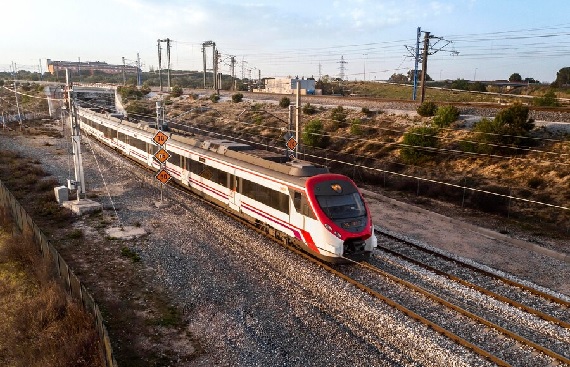India's First High-Speed Rail Begins, Signifying Global Collaboration
By
siliconindia | Friday, 09 February 2024, 07:03:57 PM IST

India's National High-Speed Rail Corporation Limited (NHSRCL) has taken a major step forward in the Mumbai Ahmedabad High-Speed Rail (MAHSR) Project by entering into a contract with the Sojitz & L&T Consortium for electrical works in the EW-1 package. This move signifies a significant advancement in bringing the country's first bullet train, utilizing Japanese Shinkansen technology, closer to reality. The MAHSR project aims to transform rail transportation in India by reducing the travel time between Mumbai and Ahmedabad from seven hours to just over two.
The agreement covers the comprehensive scope of designing, manufacturing, supplying, constructing, installing, testing, and commissioning of two sets of 25 kV Electrification Systems, customized for speeds of up to 320 km/h. The implementation of the Japanese Shinkansen-inspired traction power supply is anticipated to enhance the efficiency and speed of the entire 508 km corridor, marking a crucial milestone in the project's timeline. The MAHSR initiative, commonly referred to as the bullet train project, is set to transform rail transportation in India by reducing the travel time between Mumbai and Ahmedabad from seven hours to slightly over two. The NHSRCL has secured approximately 4.8 hectares of land for the Mumbai-based Bandra Kurla Complex (BKC) station, which will undergo construction using a bottom-up approach, starting with excavation work at ground level.
The excavation, reaching a depth of 32 meters and estimated to have a volume of 1.8 million cubic meters, necessitates a sturdy ground support system to prevent soil collapse. Presently, 681 workers and supervisors are actively engaged on-site, and this number is anticipated to reach 6000 at the peak of construction. Additionally, the project includes the construction of a tunnel in Maharashtra, employing three Tunnel Boring Machines (TBMs) with an expansive cutter head diameter of 13.6 meters. This size significantly exceeds the typical 5-6 meter diameter cutter heads used in urban tunnels for metro systems. These TBMs will be responsible for creating 16 km of the tunnel, while the remaining 5 km will be constructed using the New Austrian Tunnelling Method (NATM).
Read More News :
Microsoft collaborates with Indian startup Sarvam AI for voice tools
Brigade REAP Onboarded 5 New Unique Startups for Its 15th Cohort



.jpg)